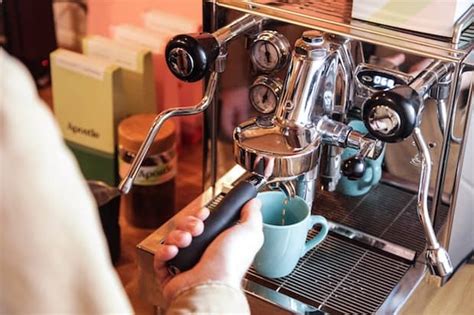Espresso machines are coveted kitchen appliances that can transform coffee beans into delectable, rich espresso shots. However, their price tags can be eye-watering, leaving many wondering why these machines command such a premium. In this article, we delve into the intricate factors that contribute to the hefty cost of espresso makers.

Materials and Construction
The foundation of an espresso maker is its materials and construction. High-quality espresso makers are crafted from durable materials such as stainless steel, brass, and aluminum, ensuring longevity and resistance to corrosion. These materials are not only expensive but also require precision engineering to create the intricate components that work together seamlessly.
Design and Engineering
Espresso makers are not mere coffee pots; they are meticulously designed machines that harness the principles of physics and thermodynamics. The precise extraction of espresso requires careful control of water temperature, pressure, and flow rate. Advanced espresso machines feature PID (proportional-integral-derivative) controllers that precisely regulate these parameters, resulting in consistent and exceptional espresso shots. Such sophisticated design and engineering add significantly to the overall cost.
Manufacturing and Labor
The manufacturing process of espresso makers is complex and labor-intensive. Each component must be manufactured with precision and assembled by skilled workers. The production of espresso machines involves specialized machinery, skilled technicians, and rigorous quality control measures, all of which contribute to the high cost.
Durability and Reliability
Espresso makers are built to withstand years of daily use. They must endure high temperatures, pressure, and frequent cleaning. To ensure durability and reliability, manufacturers use high-quality materials and employ robust construction techniques. This investment in longevity further adds to the cost of espresso machines.
Brand Recognition and Prestige
Certain espresso machine brands have established a reputation for excellence and innovation. Customers are often willing to pay a premium for the prestige and status associated with these brands. The marketing and advertising costs involved in building and maintaining brand recognition also contribute to the higher price tags.
The average cost of an espresso maker can range from $200 for basic models to over $3,000 for high-end, fully automatic machines. The following table provides a breakdown of the major cost components:
| Component | Estimated Cost |
|---|---|
| Materials | 20-30% |
| Design and Engineering | 25-35% |
| Manufacturing and Labor | 20-25% |
| Durability and Reliability | 10-15% |
| Brand Recognition and Prestige | 10-20% |
The following table compares the key features and price ranges of different types of espresso makers:
| Type | Features | Average Price Range |
|---|---|---|
| Manual Lever | Requires manual effort to extract espresso; offers precise control | $300-$1,200 |
| Pump-Driven | Uses a pump to generate pressure for extraction; more convenient than lever machines | $400-$1,800 |
| Semi-Automatic | Requires user to manually start and stop the extraction; allows for customization | $500-$2,500 |
| Super-Automatic | Fully automatic machine that grinds beans, extracts espresso, and steams milk | $1,000-$3,000+ |
Espresso makers are expensive due to the combination of high-quality materials, sophisticated design and engineering, labor-intensive manufacturing, the need for durability and reliability, and brand recognition. Understanding these factors helps appreciate the value proposition of espresso makers and enables consumers to make informed decisions based on their individual needs and budgets.
